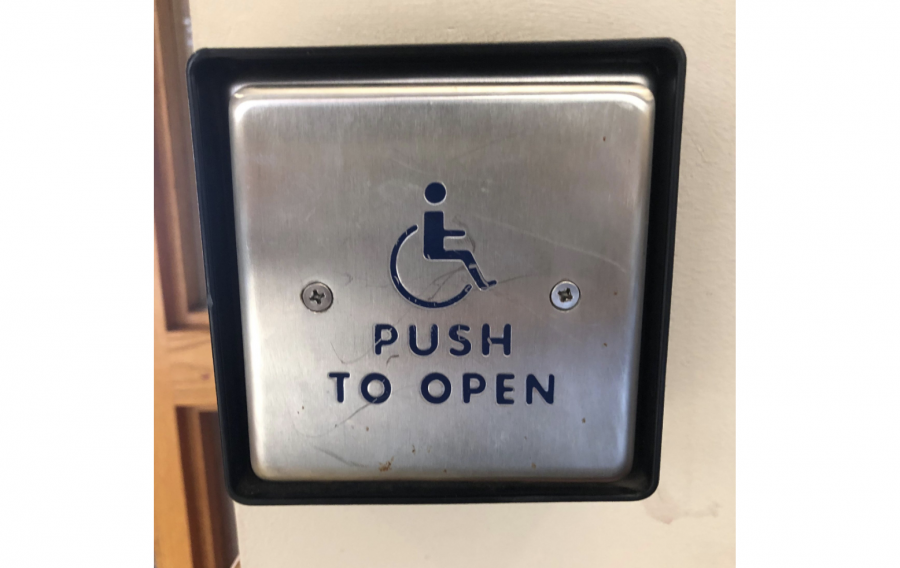Opinion: While Lafayette makes slow and steady accessibility progress, getting around campus with physical disability remains difficult
The college’s hilly topography can make it difficult for those with permanent or temporary disabilities to navigate campus. (Photo by Kathryn Kelly 19)
April 26, 2019
Ever imagined living on campus with a walking disability? I hadn’t.
My first problem was my living situation. My old dorm room was up three flights of stairs and was near impossible for me to climb up to after my injury. The Office of Residence Life was accommodating and found me a new room over spring break. However, while discussing where I would relocate, I was asked if I could handle a few stairs because “there are very few dorms on campus with none at all.”
I tore my anterior cruciate ligament (ACL) and damaged my meniscus in March while competing with the club ski and snowboard team. I thought my struggles navigating airports on the way home would be the worst of my mobility issues, but I hadn’t considered what getting around campus on crutches would be like.
Fortunately, there is a medical transport list a student can be approved for if injured, so they can get rides around campus from Public Safety. But over weeks of using this service, I learned that I either need to call early and get to class 15 minutes early or end up late to class. There is usually only one driver on duty at a time, so right before a class they tend to be overwhelmed.
Lafayette is aware of the issues around ADA accessibility and compliance with its buildings, especially with Kunkle Hall, Hogg Hall, and Van Wickle Hall. However, progress is slow and expensive.
There was a campus accessibility review done in 2014. The review included an evaluation of all buildings both residential and non-residential, as well as the cost remediation estimate for the applicable buildings. Costs range from $700 to remediate Ramer History House to $66,160 for the Kirby Sports Center.
There was a review of three buildings, Van Wickle, Simon Center and Hogg Hall, conducted in the last year, starting November 2017, that included a component of determining the buildings’ ADA accessibility. Vice President of Finance and Administration Roger Demareski said that the college has not yet reviewed the findings of that study, conducted by Alma Architecture and Gittings Associates, but will this summer.
Markle Hall was recently updated to be more wheelchair accessible, including new entrances to the building and an elevator.
Demareski added Kunkle will become more ADA compliant within the next year or two along with renovations. Van Wickle will be renovated within the next three to four years, and there is no timeline for updating Hogg Hall for ADA Accessibility compliance.
“They’ll get done, but we need to build the funding up over time. I think the work we did in Markle to add the elevator was a key project,” Demareski said. “But the costs are significant because it’s getting into the building, it’s the elevator… the ADA bathrooms, we try to package it together.”
The 2014 campus accessibility review also revealed that although most buildings match the applicable standard for the 1991 ADA standard, none meet the newer 2010 ADA standard.
I understand the costs and difficulties of renovating active buildings to meet ADA compliance, but there is always a need for handicap accessibility and it should be more of a focus for Lafayette College than it currently is. Although a minority of students are afflicted by this difficulty, a walking disability should not affect one’s ability to get to class on time.


























































































































